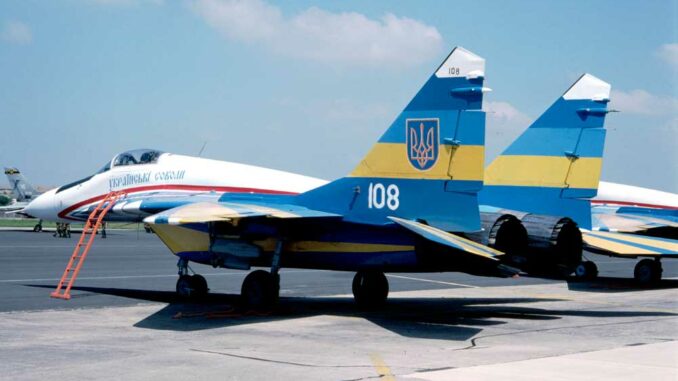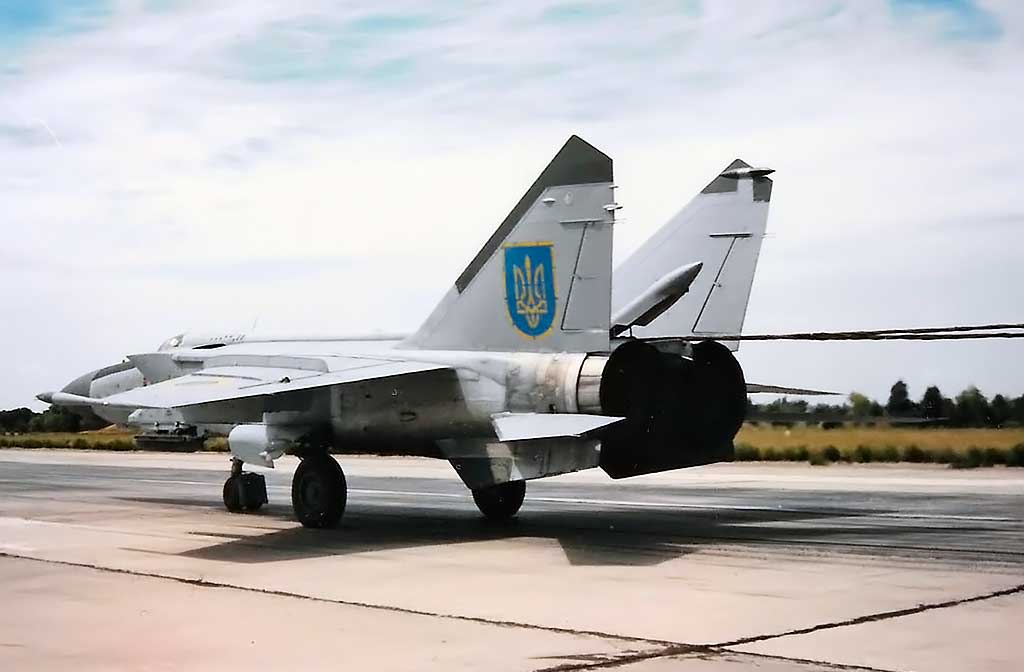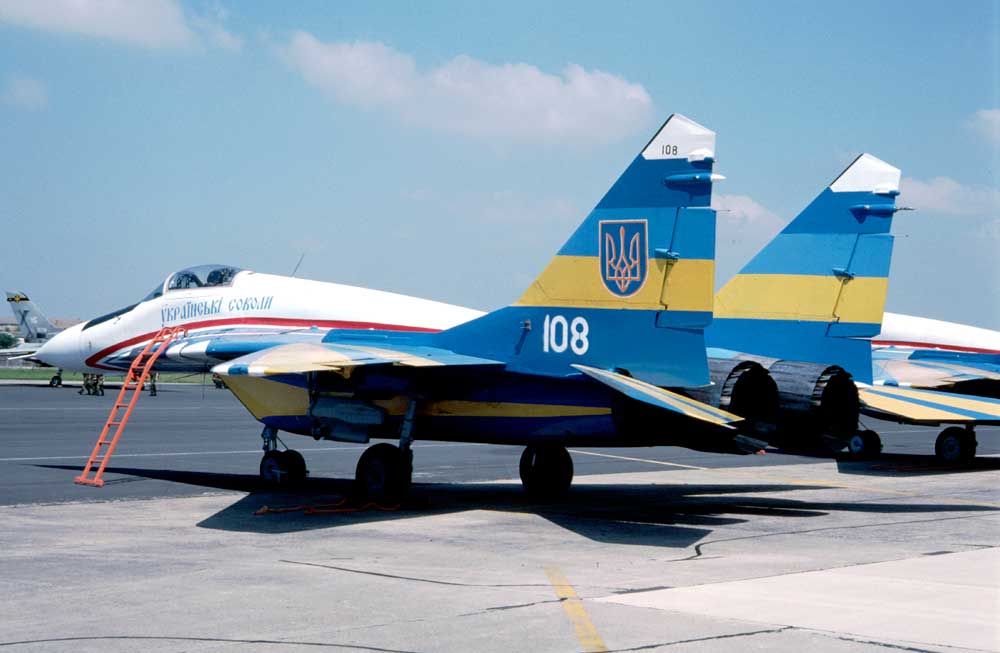
Ukraine and Sweden are planning to modernize Kyiv’s Soviet air fleet with technical support from SAAB, including radars and electronic warfare systems.
Ukraine is entering into technical cooperation with Sweden, via the SAAB Group, to modernize its Soviet-era air fleet. This partnership is based on the integration of cutting-edge Swedish technology, including radar, electronic warfare systems, and onboard protection devices. The goal is to strengthen the operational resilience of the Ukrainian Air Force in the face of modern threats, while leveraging combat experience for Swedish manufacturers. Discussions are also underway on the possible delivery of Swedish aircraft, although no contract has yet been signed. This cooperation is part of a long-term strategy to improve Ukraine’s defense without relying exclusively on NATO or the United States.
Technical and military collaboration at the heart of modernization challenges
The meeting between the Ukrainian Ministry of Defense and SAAB, a key player in the Swedish aerospace industry, marks a strategic acceleration in Kyiv’s desire to overhaul its air capabilities. Ukraine’s current fleet, largely composed of Soviet-era MiG-29, Su-27 and Su-25 aircraft, has been facing rapid wear and tear due to intensive operations since 2022. These aircraft, designed between the 1970s and 1980s, lack compatibility with current Western standards, particularly in terms of communications, navigation, and electronic warfare.
Sweden, through SAAB, is offering targeted support in new-generation avionics. This type of equipment includes active electronically scanned array (AESA) radars, secure data link modules, electronic countermeasure (ECM) systems, and infrared search and track (IRST) sensors. These technologies would extend the operational life of Ukrainian aircraft while improving their effectiveness on the battlefield.
For example, the PS-05/A Mk4 radar, used on the Swedish JAS 39 Gripen fighter, offers a detection range of up to 160 km against a fighter-type target. If a suitable version were integrated into a modernized Su-27, this would enable Ukraine to increase its air defense capabilities while reducing the transition time to new Western aircraft.

Integration of Swedish avionics on Soviet airframes
Upgrading old aircraft imposes major technical constraints, particularly in terms of electronic compatibility and power supply. Soviet systems were designed for an architecture that is completely different from that of Western equipment. To successfully integrate them, SAAB will have to reconfigure or adapt its modules to existing structures, which will require bench testing, software integration campaigns, and training local technicians in the maintenance of the new solutions.
According to aviation experts, modernizing an aircraft such as the Su-25 would cost between €5 million and €10 million per unit, depending on the complexity of the components installed. By comparison, the acquisition of a new F-16 fighter jet costs an average of $70 to $80 million each. This modernization option therefore appears more realistic in the short term, especially in the context of a prolonged war where attrition remains high.
From a tactical standpoint, the addition of modern electronic warfare systems would enable Ukrainian aircraft to better resist Russian defense systems such as the S-400 Triumf, which remains a major threat to any aircraft operating within 250 km of its radars. Onboard countermeasures (flares, active jammers, pods) would help reduce vulnerability in contested environments.
Mutual benefits for both partners
The proposed partnership is not one-sided. SAAB could gain valuable experience by collaborating with an army facing intense symmetrical warfare conditions. Swedish engineers would have access to operational data on the performance of their systems in a real war environment, something that has been rare in Europe for decades.
Ukraine, for its part, would benefit from advanced industrial skills that are difficult to access elsewhere without formal technology transfer agreements. This cooperation could extend to joint development programs, particularly in the field of drones, where Sweden is developing interesting tactical platforms such as the Saab Skeldar V-200.
This type of cooperation also opens up prospects for NATO standardization. Integrating Swedish equipment could ultimately facilitate interoperability with Western air forces, which remains a strategic priority for Kyiv. This would reduce transition costs once the air force switches to entirely Western platforms.
Towards a possible delivery of Swedish aircraft?
One of the key aspects of the discussion concerns the possible delivery of Swedish fighter jets to Ukraine. The most likely model would be the JAS 39 Gripen, renowned for its low operating costs (around $6,500 per flight hour, compared to $25,000 for an F-16), its high logistical autonomy, and its ability to operate from short runways.
However, several political obstacles remain. The Swedish government, although committed to supporting Ukraine, remains cautious about directly exporting combat aircraft. Parliamentary approval and discussions with European and US allies are needed to validate such a decision.
In the meantime, programs to train Ukrainian pilots on the Gripen have been considered, notably in Hungary and the Czech Republic, where these aircraft are already in service. This anticipation reflects a strategic desire to accelerate the Ukrainian army’s adoption of Western standards.

Pragmatic modernization in a context of attrition
Kyiv’s approach is pragmatic. Rather than relying entirely on massive deliveries of new aircraft—which are often slow and politically sensitive—Ukraine is seeking to make the most of its existing fleet. Modernizing 30 to 40 Su-27 and MiG-29 aircraft with Swedish avionics would make it possible to maintain a critical mass of air assets against Russian forces, while increasing lethality and pilot protection.
This strategy could serve as a model for other post-Soviet states facing the same technological transition challenges. Moldova, Georgia, and even some African countries using Soviet equipment could follow a similar logic, creating a potential market for SAAB in the retrofitting of older combat aircraft.
War Wings Daily is an independant magazine.